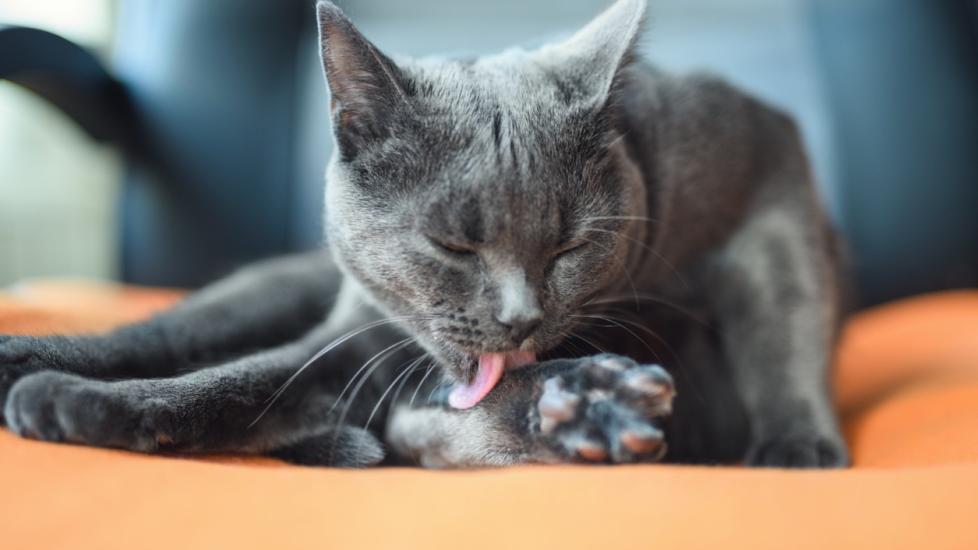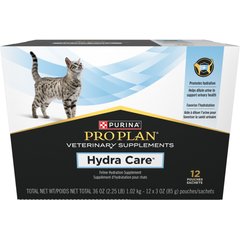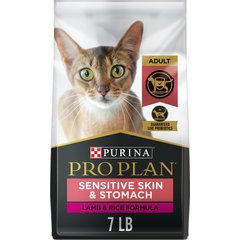Acral Lick Granulomas in Cats
What Are Acral Lick Granulomas?
Acral lick granulomas are skin lesions that appear more commonly in dogs but can occasionally be seen in cats, as well. This condition exists when your cat pet licks a specific area on its leg or paw. Allergies, anxiety, and other causes may be a trigger for this constant licking behavior.
Cats will lick the area so much that its fur will be removed and the skin will become thick, red, and moist. Acral lick granulomas (sometimes called acral lick dermatitis) are usually about the size of a dime or nickel but can be larger. They are found most often on a cat’s lower legs or between its toes.
Vet Recommended Health Support
- Feliway Optimum Enhanced Calming 30 Day Diffuser for Cats$29.99Chewy Price
- Purina Pro Plan Veterinary Diets FortiFlora Powder Probiotic Digestive Supplement for Cats, 30 count$30.99Chewy Price
- Purina Pro Plan Veterinary Diets Hydra Care Liver Flavored Liquid Supplement for Cats, 3-oz pouch, case of 12$14.99Chewy Price
- Purina Pro Plan Adult Sensitive Skin & Stomach Lamb & Rice Formula Dry Cat Food, 7-lb bag$28.08Chewy Price
Symptoms of Acral Lick Granulomas in Cats
If your cat has an acral lick granuloma, you may notice the following symptoms:
-
Itchiness
-
Excessive licking
-
Hair loss
-
Redness of the skin
-
Thickened skin
-
Scabbing
-
Moist skin
-
Odor (if secondary infection is present)
Causes of Acral Lick Granulomas in Cats
Acral lick granulomas are caused by an underlying condition or problem, such as allergies, anxiety, joint pain, skin infection, mites, trauma, boredom, foreign material under the skin, or an insect bite.
Regardless of the underlying cause, the constant licking behavior causes hair loss and the formation of a raised, ulcerated plaque on the skin that is referred to as a granuloma. It is classified as an acral lick granuloma because acral means legs and feet, which is where these lesions are found, and licking is the cause of the skin lesion. There are no cat breeds that are more prone to this skin condition than others.
How Veterinarians Diagnose Acral Lick Granulomas in Cats
An acral lick granuloma is diagnosed based on medical history, a physical exam, and diagnostic tests. It is helpful for a veterinarian to know if a cat is constantly licking a specific area of its body and when the licking behavior started. It is also important to note any changes in the environment where the cat lives, such as diet, moving into a new house, or the addition of a new baby or pet to the household.
After obtaining a thorough medical history, your veterinarian will perform a physical exam on your cat. The vet will look closely at your cat’s skin for fleas, other parasites, and signs of infection. The following diagnostic tests may be recommended to diagnose an acral lick granuloma and rule out other skin conditions:
-
Tape impression: A piece of tape is gently placed over the skin lesion briefly and then removed. The tape is then stained and reviewed under the microscope to check for bacteria and yeast on the skin which would indicate a skin infection.
-
Fungal culture: This test also checks for ringworm, which is a fungal infection that can cause a circular skin lesion where the fur is missing and the skin is inflamed. To perform a fungal culture, a veterinarian will pluck a sample of fur around the skin lesion and place it on a culture plate. Over 10 days, the culture plate will be examined daily to check for fungal growth.
-
Fine needle aspirate and cytology: This test involves removing some cells from the skin lesion with a small needle to view under a microscope. Veterinarians recommend this test to determine if the skin lesion is due to a benign or cancerous mass.
-
Skin biopsy: Occasionally a skin lesion needs to be biopsied to determine the cause of the lesion. This means obtaining a small section of skin that contains both healthy skin and the skin lesion. This is a minor surgical procedure that is performed with sedation. The biopsy sample is then sent to a pathologist for review.
-
Skin scrapings: This test checks for skin mites, such as sarcoptic mange and demodex. The veterinarian will use a scalpel blade to gently scrape the skin. The material that is scraped off is examined under the microscope to look for the presence of skin mites.
-
Skin culture: This test may be recommended to check for an antibiotic resistant skin infection. A sterile swab is rolled over the top of the skin lesion to obtain a sample of any bacteria that may be present. The swab is then placed in a culture medium to monitor bacterial growth over a three-day period. If bacteria growth is present, the type is identified and tested with a variety of antibiotics to determine which ones are best to treat the infection.
-
Allergy testing: This test will determine if a cat has certain environmental allergies. Allergy testing usually involves a blood test, but intradermal testing (wheal and flare test) may also be recommended by a dermatologist to test for allergies to pollen, dust mites, mold, and insects in the environment.
-
Food trial: A cat may need to go through a food trial to determine if a food allergy is the cause of its skin condition. A food trial takes approximately six-to-eight weeks and involves feeding a very strict limited ingredient diet consisting of prescription food that contains either novel protein or hydrolyzed protein. During this trial, it is crucial to not feed your pet any other cat food, cat treats (other than hypoallergenic), or people food. Only feed prescribed food and treats approved by your veterinarian.
- X-rays: A veterinarian may recommend X-rays of the limb that has the acral lick granuloma to screen for arthritis, trauma, and a possible foreign body under the skin that would cause pain and trigger a cat to lick the area more often.
Treatment of Acral Lick Granulomas in Cats
Treatment of an acral lick granuloma involves the following:
-
Prevent licking: It is crucial that the cat stops licking at the acral lick granuloma. If licking continues, this skin lesion will never resolve. The best way to prevent licking is for the cat to wear an e-collar (cone) until the acral lick granuloma is gone. You can also try Yuck! No Chew Spray, a topical product that can be sprayed on the skin lesion. The bitter taste of this product is meant to discourage licking of the area. However, some cats will continue to lick the area even with the Yuck spray applied. The use of an e-collar is the most effective method of stopping a cat from licking a skin lesion.
-
Treat any secondary infection: If there is a bacterial or yeast infection on the surface of the granuloma secondary to licking, then this infection must be treated with oral and/or topical medication prescribed by a veterinarian.
-
Cold laser therapy: This therapy can be performed two-to-three times weekly by a veterinarian or veterinary assistant to reduce inflammation (swelling) at the site of the acral lick granuloma.
-
Address underlying cause for acral lick granuloma: There are many possible causes for acral lick granulomas, and if the cause can be identified and treated, this will help the skin lesion resolve and hopefully prevent recurrence. Treatment will vary based on the underlying cause.
-
For instance, if boredom or anxiety are the cause for the formation of an acral lick granuloma, then behavioral modification is needed, which may involve more human interaction, toys, exercise, medication, or removing environmental stressors (if possible). If arthritis is found to be the underlying cause of an acral lick granuloma, a veterinarian may recommend a weight loss plan, joint supplement, or medication to address the pain and inflammation associated with arthritis.
-
- Surgery: A veterinarian may recommend surgical removal of the acral lick granuloma, but this is often a last resort when other treatment options have failed. If no underlying cause is found and treated, it is possible that after surgery the cat may start licking the area again and form another acral lick granuloma.
Recovery and Management of Acral Lick Granulomas in Cats
Acral lick granulomas can take weeks or months to resolve. Healing will be delayed if a cat licks at the acral lick granuloma. It is crucial to prevent licking, treat any secondary infection, and address the underlying cause for the granuloma, if found.
During recovery, it is important to watch the acral lick granuloma to make sure that the skin lesion is improving daily. If it increases in size, becomes increasingly red or swollen (or has an odor), then these symptoms need to be reported to your veterinarian.
Applying a bandage over the granuloma is not recommended as this will trap moisture close to the skin and cause the acral lick granuloma to become even more inflamed and possibly infected.
Prevention of Acral Lick Granulomas in Cats
If you notice that your cat is licking an area excessively, place an e-collar (cone) that has been properly fitted over your cat’s head to prevent licking and check the area where your cat is licking to see if there is a wound, crusts, hair loss, redness, swelling, or odor. Schedule an appointment with your local veterinarian as soon as possible so your pet can be examined. It is best to schedule an appointment for your cat within a few days of noticing the excessive licking instead of waiting weeks.
Featured Image: iStock.com/cunfek




